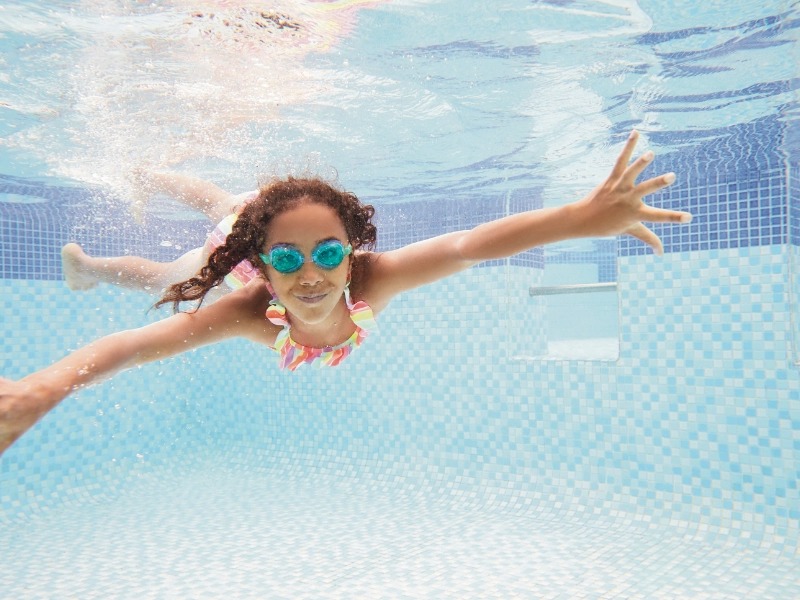Swimming is an ideal sport if you want to clear your head and strengthen your muscles. It’s a full-body exercise program that works all of your muscle groups and strengthens your cardiovascular system. Competition involves four different strokes: freestyle, backstroke, butterfly, and medley. After the referee blows a long whistle, swimmers enter the pool and step onto a block to start each event.
It’s a type of workout.

Swimming is a sport in which the body is propelled through water by a combination of arm and leg motions. It is frequently used for sports including synchronized swimming, diving, surfing, and lifesaving as well as for exercise and enjoyment. It is also a typical method of physical treatment and rehabilitation. In order to succeed, competitive swimmers put in a lot of training. They practice their strokes for hours in the water, emphasizing strength development, technique improvement, and endurance strengthening. They participate in timed races with the goal of improving their times and breaking personal records. Many swimmers take pleasure in mingling in the club with their buddies. In-person interactions can strengthen the immune system, lower stress levels, and make people happier. Blood pressure can even be lowered by it. Furthermore, swimming generates a concoction of neurotransmitters that may enhance slumber. Additionally, by keeping expectant mothers active, it lowers their chance of congenital abnormalities and premature labour. For people of all ages, swimming is a safe and efficient form of exercise.
That’s a game.

Kids can enroll in a plethora of extracurricular activities, including ballet, tee-ball, soccer, piano lessons, and swim classes. Swimming is an activity that may be done year-round, but these sports usually have a specific season. It’s actually a suggested form of exercise for people with joint or back issues. Athletes compete in timed swimming events using a variety of stroke types. Although freestyle is the most widely used of them, competitions also include butterfly, breaststroke, and backstroke. In both the short and long distance Olympic events, these four strokes are combined to produce the medley events. Swimming offers certain psychological and mental advantages despite being a physically demanding exercise. It triggers the body to release endorphins naturally, which have mood-enhancing and stress-relieving properties. It also enhances memory and boosts blood flow to the brain. Furthermore, it aids in improving physical fitness. It’s also a great kind of exercise for people who have arthritis or asthma.
It’s a communal endeavour.

Numerous children participate in various extracurricular activities, such as ballet, tee-ball, and soccer. Swimming, however, packs a bigger punch than its weight in terms of health and social advantages. Not like many other sports, which have a specific season, swimming is done all year round. Swimming is a special kind of sport because it need teamwork as well as individual skill to succeed. Since there is no solid surface to apply force on—water is approximately 800 times more thick than air—the body is unable to employ any of the energy it produces in the conventional sense. As a result, swimmers must only concentrate on balance and speed. A swimmer must also abide by stringent guidelines on how to compete and communicate with teammates. For instance, swimmers are not permitted to use some kinds of injury tape or to dress in a way that increases their buoyancy. In addition, athletes have to adhere to tight schedules for when they start and end their races.
It is a means of unwinding.

Swimming is a low-impact exercise suitable for individuals of all ages and fitness levels. In addition, it is an excellent cardiovascular exercise that fortifies your heart and lungs. Its unique quality is the way it works every muscle in your body to get past the resistance that water naturally presents. It also teaches you how to regulate your breathing, which helps you avoid panic attacks and hyperventilation. Like all physical activity, swimming increases endorphins, which enhance happiness and well-being. It can also improve mental health by offering a reprieve from the stresses of everyday life. Additionally, compared to jogging or lifting weights, it is a low-impact workout that is kinder to your joints. Whereas most extracurricular activities have a specific season, swimming is a year-round endeavour. Swimmers are constantly getting ready for their next competition or training session, even when they take a break. This sport is only a legitimate sport because of the commitment needed to succeed in it. In contrast to other sports that provide a two-week rest following the finals, swimming demands a year-round dedication to the mentally taxing exercises.











What do you think?
Show comments / Leave a comment